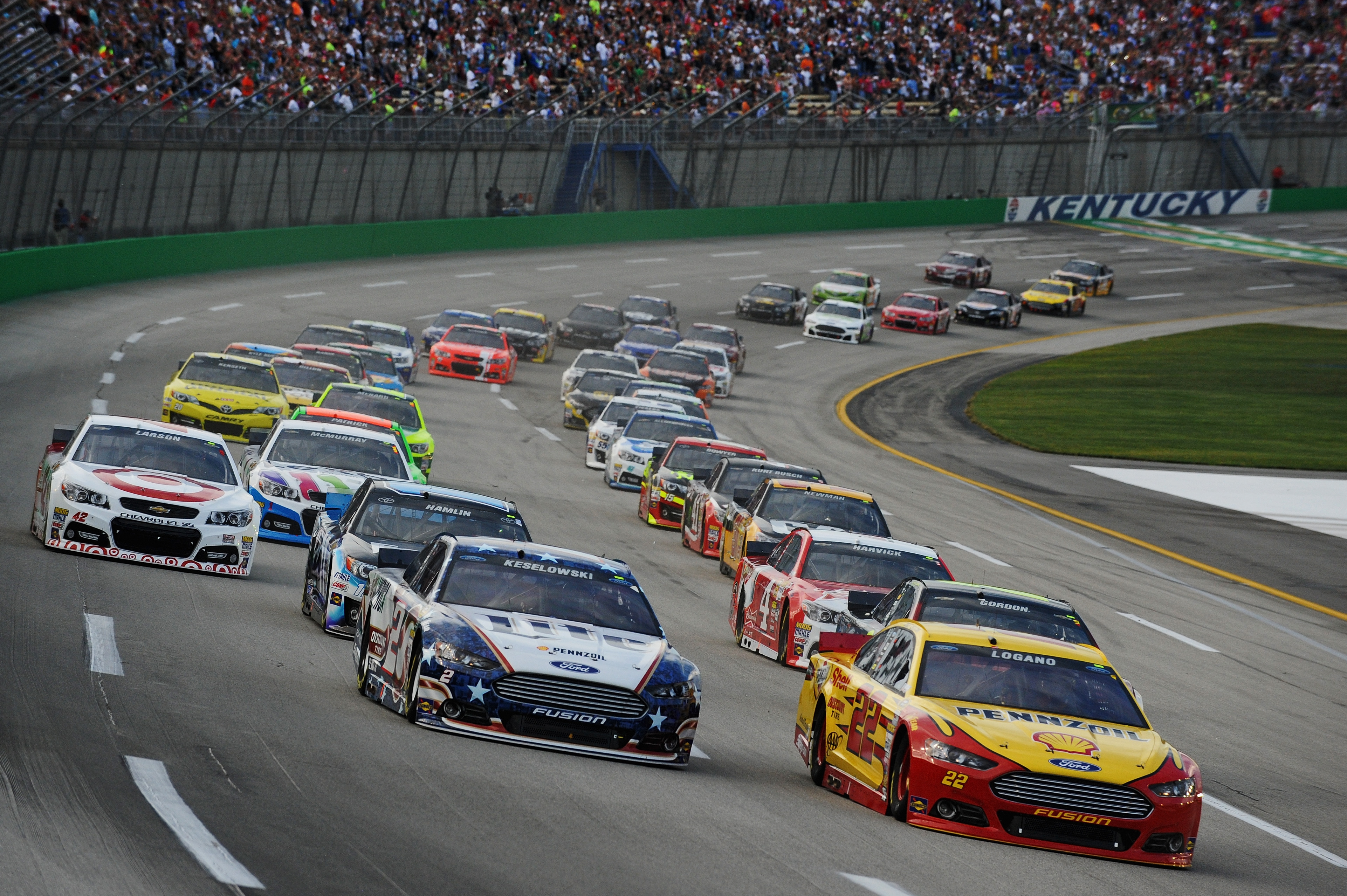
It’s kind of weird not having a race this past weekend. Under normal circumstances for the season, the NASCAR Sprint Cup Series would celebrate Father’s Day at the track, complete with a Gatorade shower and a hat dance of the winning team in victory lane.
That is not the case this year, as because of how the calendar year was broken down, it allowed for a week off on not only Father’s Day, but also the first day of summer.
However, the time away from the track also came with some big news that could potentially change everything about the sport, especially on the bigger tracks that make up the bulk of the schedule. When the season began, the Sprint Cup cars themselves had some new aerodynamics to deal with on all tracks outside of Daytona and Talladega. On the body itself, the biggest change is a shorter rear spoiler compared to a year ago, nearly an inch shorter. The spoiler a year ago was so tall that drivers couldn’t see over the top, and NASCAR had to make a minor change so that the top of the spoiler was clear, simply for visibility.
At the same time, the sanctioning body added a rule that teams would not be allowed to modify or touch the side skirts to gain an aerodynamic advantage, a practice that was common in the Chase a year ago.
Along with the aerodynamic changes, the engines themselves had a tapered spacer on the throttle body, cutting these engines from 900 horsepower down to about 750.
What this was to entail was more passing, and more control for the drivers. What it did in reality was give the drivers more control, but also gave them a lot more cornering speed. At the same time, it also made the cars extremely tight when directly in line, causing there to actually be more difficulty passing compared to before.
In fact, compared to a year ago, there are approximately 5,000-fewer passes on the track.
So, after a meeting with a drivers’ council, that originally began at Dover and continued through Pocono and Michigan, NASCAR decided that the aerodynamic package that was originally going to be tested to run for the 2016 campaign will actually get a full-on test session beginning at the Kentucky Speedway on July 11.
Drivers have been asking for a way to put more handling into the cars, in essence putting more of the race in the hands of the driver rather than the car.
What the new package looks to include is a smaller rear spoiler, whether it is in height or length is not yet known, but also Goodyear will be including a softer tire. Unfortunately, at least for the first race of the new rules package, the tire is not part of the equation as the compound that is going to be run for that race has already been decided, and there is not enough time to change or test the new compound so that Goodyear can produce tires in time for all the teams to use. On average it takes a few months to produce enough tires for teams to run for a race weekend, and with Kentucky in less than three weeks, it is not going to happen.
Overall, what this package is trying to accomplish is to make the cars harder to driver in the corners, and make the drivers work to get the handling right. It also means the cars behind them could potentially catch up and make more passes, instead of simply catching the dirty air and simply stop their momentum.
The softer compound will cause more give-up in the tires, and that will force drivers to find different lines to maintain their position, and the tires will also wear out quicker but could provide more grip because the rubber is more “into” the track.
It is similar to the old rules package that was on the Gen-4 car that was ran from the mid-1990’s until the end of 2007, especially in the later years when the spoiler size was shortened and Goodyear had the softer tires. When the “Car of Tomorrow” was introduced in 2007, which was then rolled out full-time beginning in 2008, the compound changed because the car was heavier, and handled much differently.
These new cars, they are practically a mirror image of the Ford Fusion, Chevrolet SS, and Toyota Camry that are run on the streets, and handle a lot different, very similar to the Gen-4 car of years ago.
Drivers will get an extra test session on July 8 to lead into that weekend so everyone can get extra track time to understand the rules package, and make adjustments accordingly.
These rules won’t come into effect until Kentucky because the next race on the season is at a road course, the Sonoma Raceway, where aerodynamics don’t play a factor, and the week after is Daytona, a track where there are completely different aerodynamic rules.
So come July 11, that will be an important and interesting race, because it could potentially be exactly what the drivers want, which in turn will make for a better show for the fans.



